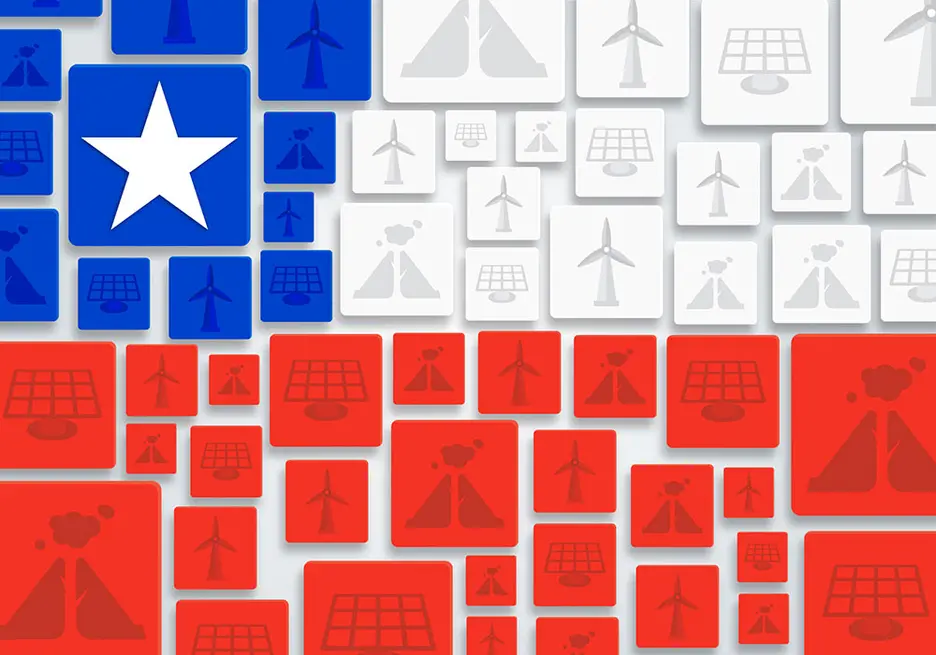What powers Chile's energy transformation?

Recently The New York Times highlighted Chile’s energy transformation. The profile told the story of Chile’s clean energy market revolution. However, missing from the story was one key component that facilitated Chile’s sustainable energy surge: donor funds.
Donor funds supported by governments can lower cost and risk barriers, which limit financing for renewable energy projects. Donor funds invest in untested technologies and new markets, while also adhering to the highest social and environmental standards. Their purpose is to jumpstart climate-friendly investments in developing countries.
In 2008, Chile had less than 20 megawatts (MW) of installed non-conventional renewable energy (NCRE), such as wind, solar and geothermal. The government’s Energy 2050 law set a target to increase Chile’s share of renewable energy to at least 60% by 2035. Despite developers’ enthusiasm for Chile’s stable political environment and resource endowment, which includes over 300 days of sunshine per year in the Atacama Desert, local banks had little or no experience with NCRE technologies.
Donor funds: able to overcome cost and risk barriers
But with access to donor funds, other organisms, such as multilaterals can deploy financial structures that overcome certain cost and risk barriers, making projects feasible for developers.
Funds like the Clean Technology Fund (CTF) and the Canadian Climate Fund for the Private Sector in the Americas (C2F) allow us to “blend” our capital and ultimately take more risks. For example, in 2013, IDB Invest (formerly known as Inter-American Investment Corporation) used a C2F loan plus our own financing for Pozo Almonte and Calama Solar, Latin America’s first large-scale photovoltaic plants.
The Chilean market evolved rapidly. By 2014, the Crucero solar project, which IDB Invest also financed, piqued the interest of a commercial bank. Soon commercial banks fully financed hundreds of megawatts of NCRE. Today, solar photovoltaic in Chile no longer needs donor money.
Thanks in large part to donor funds, IDB Invest financed five photovoltaic projects in Chile and recently completed our first wind project, contributing to Chile’s 3,400 MW of NCRE. A recent Inspiratia article, which covered the Aela wind farm, recognized, “for Aela, the [IDB Invest] involvement was key, not only from a ticket size perspective, but also in helping the commercial banks get comfortable with the transaction.
In the Cerro Pabellon geothermal plant, by channeling resources from the CTF, for which IDB Invest is the implementing entity, IDB Invest provided an insurance-like financial instrument to Enel Green Power to offset the high cost and risk associated with exploratory geothermal drilling — a risk most commercial lenders and insurance providers are typically unwilling to take.
Development banks are one of the few players positioned to test first-mover risks and provide long-term tenors; however, it is the donor funds that are perhaps the unsung heroes of Chile’s energy transformation.
Market forces taking over where donor funds left off is a trend that transcends Chile. Uruguay, Costa Rica and now El Salvador have all contributed to Latin America’s renewable surge which is 53% of total energy generation compared to the 22% world average.
Back in Chile, the lure of cleaner, commercially-viable energy is now attracting the next generation of industry. Companies like Amazon and Alphabet Inc.’s Google would like to set up data centers powered by this renewable energy. These firms create jobs and offer training to the Chilean workforce. And so the renewable energy story continues.
LIKE WHAT YOU JUST READ?
Subscribe to our mailing list to stay informed on the latest IDB Invest news, blog posts, upcoming events, and to learn more about specific areas of interest.
Subscribe



